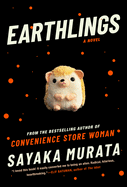
| Publisher: | Grove Press | |
| Genre: | Magical Realism, Coming of Age, Literary, Fiction | |
| ISBN: | 9780802157003 | |
| Pub Date: | October 2020 | |
| Price: | $26 |
| Starred | Fiction |
by Sayaka Murata, trans. by Ginny Tapley Takemori
Sayaka Murata's Earthlings, translated from the Japanese by Ginny Tapley Takemori, is a shocking allegory about the consequences of nonconformity. Natsuki begins her story in childhood, when she recognizes, with a dispassion that sets off early alarms, exactly what is expected. "I was a tool for the town's good, in two senses. Firstly, I had to study hard to become a work tool. Secondly, I had to be a good girl, so that I could become a reproductive organ for the town." Natsuki is an outlier in a conventional family and is comforted by Piyyut, a toy that she thinks is animate and from another planet. Her cousin Yuu, of similar age, is also a family outsider who believes he's an actual alien.
When a teacher rapes Natsuki and no one believes her, she says, with customary understatement, "It's really hard to put into words things that are just a little bit not okay." Readers, in detail, know how "not okay" it is. But Natsuki's tendency to view herself with clinical detachment isn't foolproof, and her harrowing reaction to this abuse is the first indication she's approaching a disassociation from which it will be hard to return. Her stand against conformity eventually leads to a grotesque and unexpected twist that is not for the squeamish but which punctuates their compelling desire for metamorphosis. Perfect for fans of Chuck Palahniuk and Ottessa Moshfegh, this worthy follow-up to Murata's acclaimed Convenience Store Woman will stay with readers long after the story is over. --Cindy Pauldine, bookseller, the river's end bookstore, Oswego, N.Y.
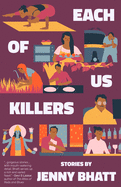
| Publisher: | 7.13 Books | |
| Genre: | Women, Short Stories (single author), Asian American, Fiction | |
| ISBN: | 9781733367264 | |
| Pub Date: | September 2020 | |
| Price: | $18.99 |
| Starred | Fiction |
by Jenny Bhatt
Debut collections rarely prove even in quality and efficacy, which makes Jenny Bhatt's 15 compelling stories in Each of Us Killers even more memorable. Peripatetically spread across continents, Bhatt's characters are often caught between expectations, desires and boundaries.
Bhatt opens with a bang--literally. In "Return to India," a man is dead, shot by a stranger's gun. Details of his isolated immigrant life are gradually exposed by his co-workers, his ex-wife and even his killer. Bhatt also employs that cleverly affecting group-reveal in her final story, the titular "Each of Us Killers," in which village men divulge to the reader--but remain guarded with the outsider journalist--the horrific details of a vicious attack and subsequent murder/suicide.
In between, standouts proliferate. In "The God of Wind," especially notable for its brevity at barely two pages, an exhausted rickshaw driver must summon some semblance of divine energy to run "like the God of Wind" when he's confronted with a shocking discovery. In "Mango Season," a shop employee recalls his "exquisite hopes of youth" decades earlier, triggered by the mangos he passes on his way home from work. In "Life Spring," a woman abandons her abusive husband and finds phenomenal success as a baked sweets entrepreneur, propelled by a startling intimate experience. In "Time and Opportunity," an aging food stall owner is trapped by his own thieving family; in "Neeru's New World," the predator doesn't win; in "Journey to a Stepwell," marriage doesn't have to be a woman's life goal.
Challenging assumptions, confronting power, manipulating barriers whenever possible--even at grave personal cost--Bhatt's cast surprises, inspires, frightens, beguiles, but never disappoints. --Terry Hong, Smithsonian BookDragon
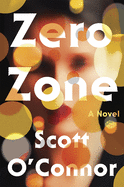
| Publisher: | Counterpoint | |
| Genre: | Women, General, Literary, Thrillers, Fiction | |
| ISBN: | 9781640093737 | |
| Pub Date: | October 2020 | |
| Price: | $26 |
| Fiction |
by Scott O'Connor
Scott O'Connor's Zero Zone sets itself apart from the literary thriller pack thanks to its highly original premise and empathetic range. The author of Half World and Untouchable, O'Connor once again plumbs the depths of trauma with careful attention to psychological detail. Zero Zone's central narrative follows the installation artist Jess Shepard in late-'70s Los Angeles. Jess has become a figure of unwanted celebrity after a strange series of events at her desert art installation, Zero Zone, culminated in a cult-like group barricading themselves inside. Several years after she was attacked by a survivor, Jess is preoccupied with the imminent release of her attacker from prison, as well as her own complicated feelings of culpability for the events at her installation.
O'Connor approaches the story from various angles: brief, punchy chapters skip back and forth in time and among a half-dozen characters' points of view. O'Connor excels at sympathetically depicting the extremes of human thought, building careful psychological portraits of characters yearning for something like transcendence. Zero Zone shows how its damaged characters' beliefs that "this world was simply a mask hiding another, more beautiful place" led to the shocking events at the installation. O'Connor takes care not to paint anyone as an uncomplicated villain, an approach that pays off as the novel becomes a reflection on forgiveness, letting go of the past and healing. While it builds to a suitably harrowing climax, Zero Zone quickly reveals itself to be a meditation on art in the body of a thriller. --Hank Stephenson, manuscript reader, the Sun magazine
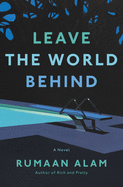
| Publisher: | Ecco | |
| Genre: | Women, Family Life, General, Literary, Suspense, Thrillers, Fiction | |
| ISBN: | 9780062667632 | |
| Pub Date: | October 2020 | |
| Price: | $27.99 |
| Fiction |
by Rumaan Alam
Rumaan Alam (That Kind of Mother) thrills and unsettles with Leave the World Behind, a novel about family and other relationships, getting what's desired and reactions in the face of crisis.
The story begins mid-road trip, a white family of four on their way from the city to their vacation rental. Amanda, an account director in advertising, and Clay, an English professor, plus their two kids. They have an apartment in Brooklyn and a mid-range sedan somewhere between luxurious and bohemian. And yet they are jealous of their well-appointed Airbnb, its idealized decor and the imagined lives of its owners. Alam's writing is gorgeously detailed and impeccably paced, so that this is a story for readers to sink into, effortless and comfortable, even sumptuous. Until a knock comes at the door.
Ruth and G.H. are the owners of the vacation home, and the arrival of the older couple in the middle of the night is disturbing enough, but their story is stranger: a blackout in New York City, fear driving them out into the country, invading the family's perfect getaway. Amanda is suspicious. Unexpectedly, Ruth and G.H. are Black. Amanda wonders if it wouldn't make more sense for them to clean this beautiful house, rather than own it.
The resulting tension touches on generational differences, gender dynamics, class and race--Clay and Amanda are self-conscious of their faux-benign racism, and the story serves subtly as a criticism of social norms. Leave the World Behind is pitch-perfect in atmosphere, easy to read and deceptive in the high polish of its setting. Alam has crafted a deeply bewitching and disquieting masterpiece. --Julia Kastner, librarian and blogger at pagesofjulia
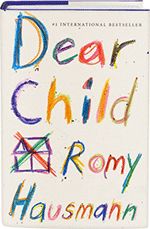
| Publisher: | Flatiron Books | |
| Genre: | Psychological, Mystery & Detective, International Crime & Mystery, Suspense, Thrillers, Fiction | |
| ISBN: | 9781250768537 | |
| Pub Date: | October 2020 | |
| Price: | $26.99 |
| Fiction |
by Romy Hausmann
German author Romy Hausmann's chilling English-language debut, Dear Child, begins where other abduction thrillers end: with the abductees having escaped. But they are far from being free, and Hausmann keeps readers captive until the last sentence.
When Lena Beck was a 23-year-old student, she went missing in Munich after attending a party. That was 13 years ago. In the present, near the Czech border, in Cham, a woman runs out of the woods one night and is hit by a car. She has no ID or personal effects on her, but right behind her is an eerily calm 13-year-old girl. When paramedics arrive, the girl tells them her name is Hannah and her mother is Lena. Hannah even knows her mom's blood type.
While waiting for Lena to undergo surgery at the hospital, Hannah is looked after by Sister Ruth, who attempts to retrieve emergency contact info from Hannah. What's her father's name? Family surname? Phone number? Address? Where was Lena running from?
Hannah whispers, "Nobody must find us."
When Sister Ruth asks her to elaborate, Hannah says, "[Mama] wanted to kill Papa by accident," and tells her that Hannah's younger brother, Jonathan, is back at their cabin in the woods cleaning stains from the carpet. He was scared of the noise. What noise? "What it sounds like when you bash someone's head with something. Bam!"
Certain something is very wrong, Sister Ruth notifies the authorities, who eventually call Lena Beck's parents, Matthias and Karin. After 4,825 days, they cannot believe the police have found Lena, injured but alive.
Matthias and Karin race to Cham in the night, and encounter a crushing surprise at the hospital. But they also catch sight of Hannah, who's the spitting image of Lena as a teen. The girl is being remanded to a childhood trauma center and, apparently, Matthias and Karin also have a grandson, who's been found at the cabin--along with the body of a man with his face bashed in. The kidnapper is dead, and the nightmare is over for his victims. Or is it?
Comparisons to Emma Donoghue's Room are perhaps inevitable, but by starting the novel with the abductees' escape, Hausmann keeps readers wondering where the story goes from there, as it travels down mysterious and surprising paths. Chapters alternate between the points of view of Matthias and the former captives, with flashbacks providing glimpses of what happened inside the cabin. Scenes of cruelty are horrifying but not graphic; most are narrated by Hannah, who doesn't fully understand the significance of the adults' actions.
Hannah's voice is the most striking, and Hausmann captures it perfectly. Born in captivity, the girl is both highly intelligent and achingly innocent, her view of the world entirely shaped by a cruel man. Her impeccable politeness has a sinister effect, making readers question what's beneath the unruffled patina. She draws disturbing pictures, in art therapy and to pass the time, observing that she needs the crayon in carmine red to illustrate fresh blood, that claret's "fine for old blood, and for really old blood the brown crayon is best." Her matter-of-fact revelations raise fresh questions in a case thought to be closed.
And Hannah has no patience for people without manners. When her little brother becomes catatonic after he's given pills at the children's psychiatric center, Hannah thinks, "I don't like his stupid eyes" and "it's making it harder for me to love him." After all, he must say hello when he sees her and not hit his head on the table while eating. She starts distancing herself from Jonathan, which makes his plight even more heartbreaking. At least inside the cabin, the boy felt loved by his sister and mother.
In contrast to the children's reactions, Matthias is consumed by rage. Rage at the fact that he couldn't prevent Lena's abduction, that he still doesn't know all the horrors she suffered at the cabin, that he now might have no control over his granddaughter's care. He's faced with questions from his wife and from Hannah's doctors: How can he provide a "normal" life for someone who feels safest locked up in a cabin? The whole ordeal hurls Matthias toward a startling self-reckoning, with Hausmann showing how someone driven by love might inflict as much damage as someone who sets out to harm.
The author also explores the notions of imprisonment and freedom, how neither is tied to four walls and physical space. After moving back to her own place, the woman who fought and escaped from her abductor realizes she's still a prisoner. She keeps her doors locked and shuns company, allowing only her former girlfriend to visit. Her fears, Matthias's savior complex and Hannah's desire to return to the only home she knew collide in a white-knuckle climax. And just when readers think it's okay to exhale, the final note of hope--of one woman's determination to find beauty beyond boundaries--will take their breath away. --Elyse Dinh-McCrillis
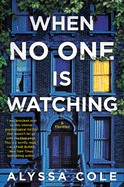
| Publisher: | Morrow | |
| Genre: | Women, Mystery & Detective, Suspense, Thrillers, Fiction, Women Sleuths, African American | |
| ISBN: | 9780062982650 | |
| Pub Date: | September 2020 | |
| Price: | $16.99 |
| Mystery & Thriller |
by Alyssa Cole
What makes When No One Is Watching, a thriller by Alyssa Cole (A Princess in Theory; An Extraordinary Union), so psychologically haunting is that it could easily be true. Cole has taken the gentrification of historically Black and other marginalized identity neighborhoods and plumbed that reality to its darkest depths for a tale that's eerily uncomfortable due to its chilling familiarity.
When Sydney Green comes home to Gifford Place, the historically Black Brooklyn neighborhood where she grew up, she's not surprised to see new white faces living among the brown ones. When a perky blonde relates white-dominant history to groups of tourists--part-sightseeing, part-house hunting--tromping through Sydney's neighborhood, Sydney designs her own tour centering Black stories, even as her childhood neighbors' homes become re-occupied at surprising speed. People she was sure would die in their family homes surrounded by loved ones and memories are suddenly gone without saying goodbye.
Thus begins the descent into conspiracy-theory madness that turns out not to be crazy at all, but rather a web of kidnapping and lies whose threads reach into all aspects of society: the cops, the press, the lawyers, the realtors, some of the very neighbors themselves, and the new medical research center in the neighborhood, the one intended to provide groundbreaking opioid addiction treatment. If everyone is in on it, even those in Sydney's own community whom she would never think to suspect, how can she trust Theo, the male half of the white couple living in Mrs. Payne's former house, who also suspects something sinister about the neighborhood's rapid transformation? Told from both Sydney's and Theo's perspectives, their suspicions converge in action-packed final chapters that don't shy away from the depths of human greed and depravity, nor the grim actions of exactly what it takes to rebel against them. --BrocheAroe Fabian, owner, River Dog Book Co.
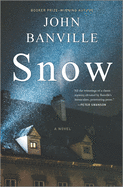
| Publisher: | Hanover Square Press | |
| Genre: | Mystery & Detective, Crime, Traditional, Literary, Thrillers, Fiction | |
| ISBN: | 9781335230003 | |
| Pub Date: | October 2020 | |
| Price: | $27.99 |
| Mystery & Thriller |
by John Banville
Early on in Man Booker Prize-winner John Banville's Snow, a murder suspect asks Detective Inspector St. John Strafford, "Will you be calling us all together at dinnertime to explain the plot and reveal the killer's name?" It's part of Snow's good running joke about its unmissable resemblance to an old-school mystery, although readers will be hard-pressed to name one of those with a castration at its center.
On a pitilessly snowy December morning in 1957, a body is found in the library at Ballyglass House, owned by the aristocratic Osborne family and located in southeast Ireland's County Wexford. The corpse, which has been worked over with a knife, is that of Father Tom Lawless, a parish priest and frequent visitor to Ballyglass House, where the elements forced him to spend the night before his body was discovered. As Strafford and his junior officer conduct the business of interviewing the Ballyglass House residents and staff, they find that no one has an alibi for the night of the murder, nor is there evidence of forced entry.
Snow represents the first time that Banville (The Sea; Ancient Light) has wrested credit for a mystery novel from his crime-writing alter ego, Benjamin Black, and with good reason: Snow is a beautifully executed, nostalgia-churning throwback that directs the occasional wink at the reader. Of the fact that Father Tom was not only stabbed in the neck but also "gelded," Strafford thinks at one point, "No newspaper in the country would dare print such shocking facts." Those were the days. --Nell Beram, author and freelance writer
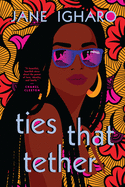
| Publisher: | Berkley | |
| Genre: | Romantic Comedy, Romance, Contemporary, Multicultural & Interracial, Fiction | |
| ISBN: | 9780593101940 | |
| Pub Date: | September 2020 | |
| Price: | $16 |
| Romance |
by Jane Igharo
Nigerian-Canadian author Jane Igharo's debut, Ties That Tether, explores love across cultural divides in a sweet, thought-provoking romance about finding happiness while remaining true to one's background.
Right before her family emigrated to Canada when Nigerian-born Azere was 13, she promised her father on his deathbed that she would marry only an Edo man. After yet another blind date orchestrated by her mother fails epically, Azere falls headlong into a mind-blowing one-night stand with sexy stranger Rafael. She knows her mother will never accept a white suitor, so Azere walks away from their connection, only to have Rafael show up as a new hire in her workplace. However, their chemistry is irresistible, and hiding their feelings becomes impossible when Azere learns their night together left her pregnant.
Igharo shows great promise, particularly in her examination of the catch-22s of trying to remain true to one's culture of origin while also embracing and fitting into the culture of a second home country. Rafael's family is Spanish, adding an extra layer of complexity as Azere worries that her Nigerian roots will take a backseat to his family's traditions when their baby is born. Some readers may become impatient as Azere struggles to find her voice, but Igharo does a fine job of communicating her heroine's desire to remain close with her family. Rafael has tragic secrets of his own, but his care and respect for Azere help keep readers' sympathies engaged. Happily ever after is hard-won and satisfying in this #ownvoices romance. --Jaclyn Fulwood, blogger at Infinite Reads

| Publisher: | Atria | |
| Genre: | Self-Help, Biography & Autobiography, Women, Women Authors, Psychology, Affirmations, Poetry, Personality, Motivational & Inspirational | |
| ISBN: | 9781982132071 | |
| Pub Date: | October 2020 | |
| Price: | $24 |
| Psychology & Self-Help |
by Maggie Smith
When poet Maggie Smith's marriage fell apart unexpectedly, she began writing "notes to self": brief meditations on dealing with times of intense turmoil and darkness. Each one contained a kernel of advice: "Let the hard days be hard." "Tell yourself kinder truths." "Believe there is peace up ahead.... Even if you can't see it yet." She began posting them on Twitter, ending each note with "Keep moving." In her wise luminous sixth book, Keep Moving, Smith (Good Bones) combines some of those notes with longer essays about dealing with grief, upended expectations and the surprising new spaces created by upheaval.
Smith brings her poet's sensibility to loss, asking questions about the gifts of darkness, delighting in words and concepts with multiple layers. (Revision, a favorite writing practice, also becomes "re-envision," a chance to change one's outlook.) She draws in stories from when her children were small, trying to help them make sense of this confusing world and its transient, heartbreaking beauty. Smith's daughter offers the idea that the sky fills in the space when a tree is cut down, expanding into its new possibilities. As she walks through the aftermath of divorce, Smith also learns to stretch out, filling in her new, unfamiliar space. Her essays trace her journey from darkness to layered light, and her nudges to readers offer wise companionship for their own difficult journeys. "Fill yourself to the skin," she says. "Let yourself be changed, and trust that change is not erasure. Keep moving." --Katie Noah Gibson, blogger at Cakes, Tea and Dreams

| Publisher: | Mountaineers Books | |
| Genre: | Nature, Trees, Technology & Engineering, Construction, Carpentry, Natural History, Forestry, Science, Agriculture, Plants | |
| ISBN: | 9781680511994 | |
| Pub Date: | October 2020 | |
| Price: | $21.95 |
| Nature & Environment |
by Stephen Arno, Carl Fiedler
The Douglas-fir is complex and chock full of enigmas, even regarding something so seemingly simple as its name. "Douglas-fir" was not formally settled until 1950, despite the tree being centuries old and specimens first collected by a non-indigenous person in 1791. The tree's secrets are spilled in Douglas Fir, so titled by forestry pioneers Stephen Arno and Carl Fiedler because this is how (incorrectly) the name is used in common parlance--all the more amusing when one learns it isn't a true fir.
The Douglas-fir was once the world's premier construction lumber and changed the course of history on several fronts. Douglas-fir is a "mix of distinctive structural features and physiological attributes [producing] a tree that is puzzling, exceptional, and in ways a marvel of nature." It yields more quality lumber than any other tree in the world and its genetic diversity allows it to range from mere head-height to hundreds of feet tall. It tends to be fire-resistant, adding to the chance it can live for centuries. Coastal Douglas-fir even contributes to its own irrigation by collecting fog droplets on its needles. "Though this tree has long played an integral role in the lives of humans and animals, many of its secrets are only now being understood through modern science."
Arno and Fiedler have written other books together about the natural world (Ponderosa) and present a seamless and engaging history of one of its marvels. The narrative includes historical photos and detailed sketches and is followed by a visitor's guide to notable North American Douglas-firs--altogether a trip-inspiring package. --Lauren O'Brien of Malcolm Avenue Review

| Publisher: | Greystone Books | |
| Genre: | Nature, Life Sciences, Animals, Wolves, Science, Mammals, Zoology - General | |
| ISBN: | 9781771645249 | |
| Pub Date: | September 2020 | |
| Price: | $26.95 |
| Nature & Environment |
by Rick McIntyre
"Why can't I find a man like 21?" a friend asks Rick Mcintyre. This bemoaning might seem strange when one learns 21 is a Yellowstone wolf, but The Reign of Wolf 21 amply explains the dismay. Picking up where he left off in The Rise of Wolf 8, his award-winning story of a runty wolf pup who rose to alpha male status, McIntyre provides another fact-filled and science-based tale that can't help but also warm hearts. The detailed daily observations of mating, feeding and hunting habits for what became the largest pack ever recorded are also a love story for the ages.
"At its height, the Druid Peak pack, led by wolf 21, comprised thirty-eight wolves and held sway over an enormous territory in Lamar Valley. The intrepid alpha male achieved all this by being fearless in battle, never backing down, never killing a rival wolf, and, even more importantly, having an equally loyal, fearless, and wise companion by his side, wolf 42." The story of how 21 and 42 became who they were, particularly through the early influence of other pack members, and their devotion to each other give soul to the story.
Wolf 21 was raised and mentored by 8, his adoptive father, and McIntyre shares enough of their relationship to evidence 8's impact. But those interested in 21's ultimate reign over the wolves infamously reintroduced to Yellowstone in 1995 will certainly want to start at the beginning or go back to fill in the details of this legendary saga so skillfully told. --Lauren O'Brien of Malcolm Avenue Review

| Publisher: | Greenwillow | |
| Genre: | Animals, Bedtime & Dreams, Imagination & Play, Juvenile Fiction, Lions, Tigers, Leopards, etc. | |
| ISBN: | 9780062866103 | |
| Pub Date: | September 2020 | |
| Price: | $18.99 |
| Children's & Young Adult |
by Kevin Henkes
There's something new under the sun: Sun Flower Lion is a fresh spin on the traditional cumulative tale. Not only does it depart from the breakneck pacing and seemingly endless unspooling characteristic of "This Is the House That Jack Built" and its kind, in Kevin Henkes's book, imagination, not action, fuels the narrative.
"This is the sun," Henkes begins, "Can you see it?" This introduces a white circle rimmed with lacelike yellow trim. Throughout the book's six whisper-short chapters, this simple image--it conjures a color-reversed fried egg--keeps changing its look and, hence, identity. For starters: to illustrate "This is a flower. Can you see it?" chapter one's sun has grown a stem and two leaves. And, hey, what's this? "It looks like a little lion." Later in the book, the lion sleeps: "He dreams he is in a field of flowers.... The flowers are cookies."
For the book's art, Henkes sticks with yellows, grays and black and white, which serve his mission: to spur toddlers to look for similarities among images. The book concludes with a cozy, applause-worthy curtain call for its featured players: the sun and a flower flank a lion family that includes the little cub, whose tail tuft will remind keen-eyed readers of... something. --Nell Beram, freelance writer and YA author
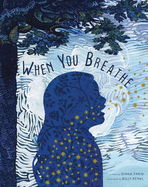
| Publisher: | Cameron Kids | |
| Genre: | Concepts, Health & Daily Living, Environment, Science & Nature, Body, Juvenile Fiction, Daily Activities | |
| ISBN: | 9781944903930 | |
| Pub Date: | September 2020 | |
| Price: | $17.95 |
| Starred | Children's & Young Adult |
by Diana Farid, illust. by Billy Renkl
Physician Diana Farid uses her medical expertise and poetry skill to give young readers a magical glimpse into the life-giving process of breathing. Farid's strong, accessible imagery and Billy Renkl's bold, colorful collage and mixed-media illustrations work together to educate a young audience about this vital, involuntary function.
A miraculous transformation occurs when the air outside the body is inhaled. It becomes breath. "When you breathe--/ whoosh!--/ breath fills/ the upside-down tree/ inside your rising chest." The textual and visual metaphor aptly relates the lungs bronchi with the branching plant that provides the air to start. Renkl's stunning depiction of the inverted tree, complete with colorful flowers and vibrant leaves, drives home the beauty of the system. "Breath blooms/ at tree tips,/ like sprouting leaves/ on lush spring stems." The activity in the lungs pushes this marvelous substance out to all corners of the body, bringing life: "every step,/ every hop,/ every ascending tune." Then, when "those grand atoms... which make the stars" complete their course, the breath returns to the world as air.
The science of the body is wholly charming in this poetic tribute to lungs. Farid's representation is awe-inspiring and accessible, despite the complex topic. Renkl's dramatic illustrations--layers of patterned shapes in rich colors and textures--gives the art dimension and vibrancy. An added bonus is a vocabulary list of breathing words at the end of the book. When You Breathe, an author and illustrator debut, is a sensory extravaganza. --Jen Forbus, freelancer